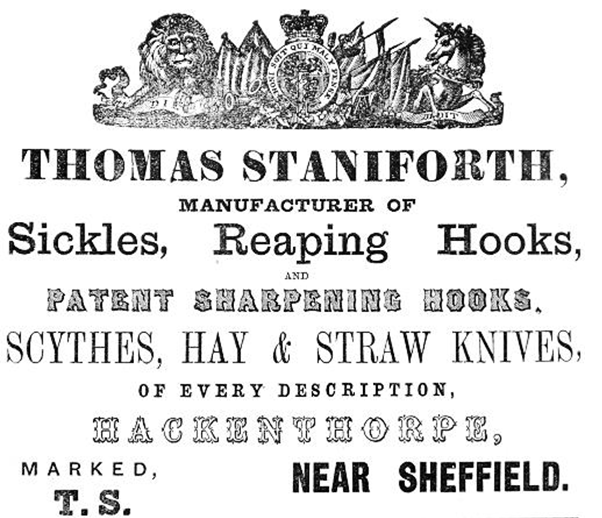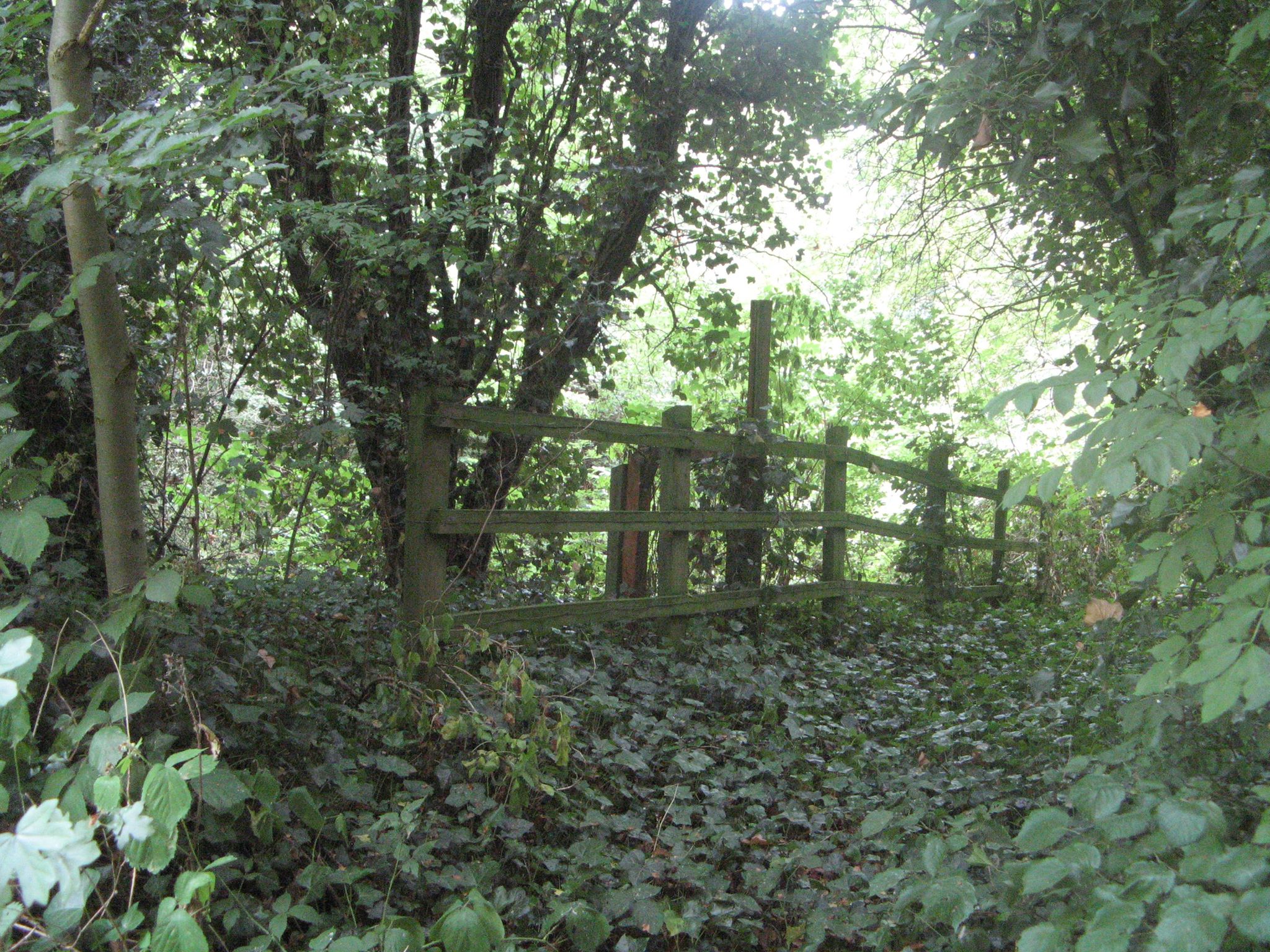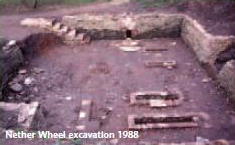
Thomas Staniforth & Co. Sickle works at Hackenthorpe.
 Nether Wheel Location, July 2018
Nether Wheel Location, July 2018
The Lower Sickle Wheel, also known as the Nether Wheel or Middle Wheel, was a Sickle and scythe grinding wheel that stood on the Shire Brook as it flowed through the hamlet of Normanton Spring near Hackenthorpe.
The wheel was built by John Taylor in 1749, upon his death in 1756, his nephew George Inkersall took over. Throughout the 19th Century the wheel was leased by the Staniforth family of Hackenthorpe, and the Hutton family of Ridgeway.
In 1802, adjustments were made to the dam, and the wheel was in use until around 1887. In 1988 work was carried out on the location of the Lower Sickle Wheel, and the entire site was excavated. The outline of the mill was unearthed, as well as stone walls, and grinding troughs.
In later years the area has become very overgrown again, and although the site is located on maps related to the Shirebrook Valley Nature Reserve, the site is almost unreachable.
Opposite the Nether Wheel, at the bottom of Dyke Vale Road, a row of terraced houses known as Nether Wheel Row were built in the 1860s by James Hutton. These houses were intended to be used by the local Sickle grinders that worked on the Sickle Wheels, however census records show that Miners were the only residents.
Roughly a few hundred feet upstream from the Lower Sickle Wheel stood a second wheel known as the Upper Sickle Wheel. The Shire Brook flowed under Linley Lane before reaching the Upper Sickle Wheel, and then continued downstream to the Lower Sickle Wheel. From here it carried on through the Shire Brook Valley and the Carr Forge and Rainbow Dams.
 Nether Wheel Excavation in 1988
Nether Wheel Excavation in 1988
The Upper Sickle wheel was built in the mid-18th Century and was unique in the sense that it featured a double dam, with the main dam being to the west of Linley Lane. By the 1890s, the Upper Sickle Wheel was the last functioning water powered grinding wheel operating on the Shire Brook when it ceased operation.
Surviving wage slips dated March 26th through to June 4th 1796 for Hutton & Co. at the Birley Wheel (Upper Sickle Wheel) showed a workman earned 16s for a 6 day week. There is also an account of work for Hutton & Co at the Birley Wheel dated 2nd May 1796, for Joseph Hutton, in this account there was £17 4s. There is also an account dated 10th May 1796 for Thomas Staniforth, the amount here was £15. Luke Staniforth also had an account for £10.
The late historian T.L Platts noted that a regular meeting of Sicklesmiths was held at The Haven at Ridgeway. The men noted for the accounts included Thomas Staniforth of Hackenthorpe, Joseph Hutton of Ridgeway and Luke Staniforth of Moorhole. The meeting was essentially used as a way for the individuals to present their expenses concerning the joint operation of the Birley Moor wheel.
Today there is very little evidence of the Upper Sickle Wheel, some large stones can be found in the Shire Brook itself, however there are no other evidence of a foundation.
The Upper and Lower Sickle Wheels were often grouped together, and known as the Birley Moor Wheel.